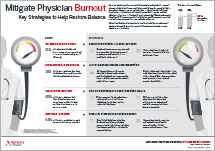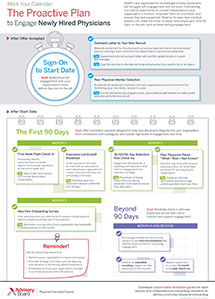Auto logout in seconds.
Continue LogoutMinnesota ranks first in Medscape's annual list of the best places to practice medicine in the United States, which this year focused on places "where physicians can thrive" at work and in their community.
Infographic: The proactive plan to engage newly hired physicians
Methods
For the list, Medscape compiled data from multiple sources including its own reports on physician compensation; physician burnout, depression and suicide; and lifestyle and happiness; as well as data from the Commonwealth Fund, Kaiser Family Foundation, WalletHub, and others.
Medscape considered 14 key criteria, including metrics related to physician work life and happiness, the fiscal and regulatory landscape affecting physicians in each state, the state health system's overall performance, and a state's overall livability.
Rankings
According to Medscape, the 10 best states in which to practice medicine are:
- Minnesota;
- Iowa;
- Wisconsin;
- Utah;
- Hawaii;
- Washington;
- Nebraska;
- South Dakota;
- Massachusetts; and
- Vermont.
Medscape's Marcia Frellick writes that physicians in Minnesota have some of the lowest burnout rates in the country. In addition, the state ranks high for affordability, culture, and livability. Frellick noted physician compensation in the state averaged $322,000.
Meanwhile, according to Medscape, the five worst states in which to practice medicine are:
- Kentucky;
- West Virginia;
- Louisiana;
- Nevada; and
- Oklahoma.
While most physicians in Kentucky said they were happy outside of work, Frellick writes that half of them said they were burned out. In addition, Kentucky's malpractice payouts were above the national average, and the state overall has a low health system performance by Medscape's metrics (Frellick, Medscape, 5/10; Medscape "Best & Worst Places to Practice 2019," 5/8).
Learn more: The proactive plan to engage newly hired physicians
Hospitals increasingly employ physicians but continue to struggle with engagement and turnover. Robust physician onboarding is leaders’ critical opportunity to sustain—and build on—new hires’ naturally high engagement levels during their first year of tenure.
Download this infographic to learn how to drive engagement across physicians’ first 90 days at your organization and beyond.
Don't miss out on the latest Advisory Board insights
Create your free account to access 1 resource, including the latest research and webinars.
Want access without creating an account?
You have 1 free members-only resource remaining this month.
1 free members-only resources remaining
1 free members-only resources remaining
You've reached your limit of free insights
Become a member to access all of Advisory Board's resources, events, and experts
Never miss out on the latest innovative health care content tailored to you.
Benefits include:
You've reached your limit of free insights
Become a member to access all of Advisory Board's resources, events, and experts
Never miss out on the latest innovative health care content tailored to you.
Benefits include:
This content is available through your Curated Research partnership with Advisory Board. Click on ‘view this resource’ to read the full piece
Email ask@advisory.com to learn more
Click on ‘Become a Member’ to learn about the benefits of a Full-Access partnership with Advisory Board
Never miss out on the latest innovative health care content tailored to you.
Benefits Include:
This is for members only. Learn more.
Click on ‘Become a Member’ to learn about the benefits of a Full-Access partnership with Advisory Board
Never miss out on the latest innovative health care content tailored to you.


